 W
WAmantis reticulata is a species of praying mantis in the family Mantidae, found in Indomalaya.
 W
WThe banteng, also known as tembadau, is a species of cattle found in Southeast Asia. The head-and-body length is between 1.9 and 2.25 m. Wild banteng are typically larger and heavier than their domesticated counterparts, but are otherwise similar in appearance. The banteng shows extensive sexual dimorphism; adult bulls are generally dark brown to black, larger and more sturdily built than adult cows, which are thinner and usually pale brown or chestnut red. There is a big white patch on the rump. Horns are present on both sexes, and are typically 60 to 75 cm long. Three subspecies are generally recognised.
 W
WThe bicolored roundleaf bat is a species of bat in the family Hipposideridae found in Indonesia, Malaysia, the Philippines, Thailand, and Timor-Leste. This bat inhabits caves, rock crevices and tunnels among lowland forests. They roost in large numbers and consumer mostly small winged insects. Their navigation and hunting skills come from the use of echolocation. Its leafnose is used to release ultrasonic shouts to distinguish its surroundings. Echolocation is also used to distinguish other species based on their wingbeat and size. The habitat of this bat decides the color of its fur. Bleaching fumes of a cave environment will cause an orange colored fur. Those who inhabit a well-ventilated roost will be a light brown color.
 W
WThe Maduran leaf-nosed bat is a species of bat in the family Hipposideridae endemic to Indonesia. This species is known from the eastern half of Java and on Madura Island. It is found below 1,000 metres (3,300 ft). It is an IUCN Red List Least Concern species.
 W
WThe pygmy fruit bat, also known as the grey fruit bat, is a species of megabat.
 W
WThe cave nectar bat, dawn bat, common dawn bat, common nectar bat or lesser dawn bat is a species of megabat within the genus Eonycteris. The scientific name of the species was first published by Dobson in 1871.
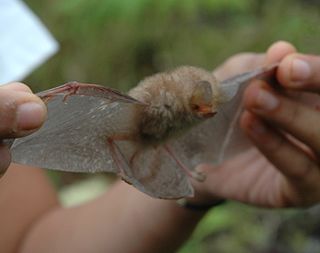 W
WThe clear-winged woolly bat is a species of vesper bat in the family Vespertilionidae. It is found in Brunei, Indonesia, Malaysia, and the Philippines. Members of this species are relatively small, typically weighing about 4.5g and mainly forages in the understory of tropical forests. This species also presents a unique variant of echolocation that is a higher intensity and lower frequency than most other kerivoula calls. The sort range calls are distinguishable from the long range orientational echolocation calls by peak frequency and duration.
 W
WEutropis rugifera, variously known as Nicobar Island skink or rough-scaled sun skink, is a species of skink from southeastern Asia.
 W
WThe silvery gibbon is a primate in the gibbon family Hylobatidae. It is endemic to the Indonesian island of Java, where it inhabits undisturbed rainforests up to an altitude of 2,450 m (8,040 ft). It is listed as Endangered on the IUCN Red List since 2008, as the wild population is estimated at comprising less than 2500 mature individuals.
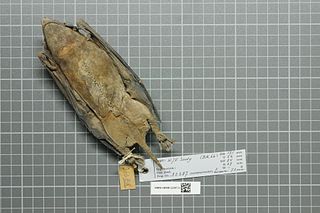 W
WThe hairless bat, also called the naked bulldog bat and greater naked bat, is a species of bat in the family Molossidae. The generic name Cheiromeles comes from the Greek word cheir and the species name is derived from the Latin torques.
 W
WHorsfield's fruit bat is a species of megabat native to South East Asia. It is named for Thomas Horsfield, an American naturalist who presented the type specimen to the British Museum.
 W
WThe Javan leopard is a leopard subspecies confined to the Indonesian island of Java. It has been listed as Critically Endangered on the IUCN Red List since 2008. The population is estimated at less than 250 mature individuals, with a decreasing population trend. The total remaining habitat is estimated at only 2,267.9 to 3,277.3 km2.
 W
WThe Javan rhinoceros, also known as the Sunda rhinoceros or lesser one-horned rhinoceros, is a very rare member of the family Rhinocerotidae and one of five extant rhinoceroses. It belongs to the same genus as the Indian rhinoceros, and has similar mosaic, armour-like skin, but at 3.1–3.2 m (10–10 ft) in length and 1.4–1.7 m (4.6–5.6 ft) in height, it is smaller. Its horn is usually shorter than 25 cm (9.8 in), and is smaller than those of the other rhino species. Only adult males have horns; females lack them altogether.
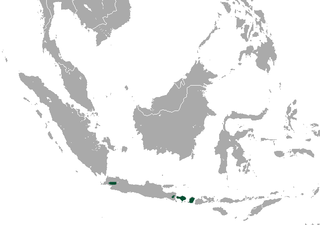 W
WThe Javan Tailless Fruit Bat is a species of megabat in the family Pteropodidae. It is endemic to Indonesia.
 W
WThe Javan warty pig, also called Javan pig, is an even-toed ungulate in the family Suidae. It is endemic to the Indonesian islands Java and Bawean, and is considered extinct on Madura. It is listed as Endangered on the IUCN Red List since 1996.
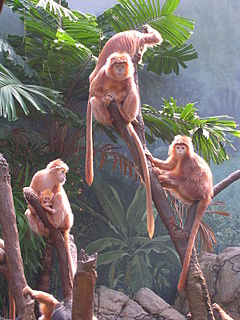 W
WThe East Javan langur, also known as the ebony lutung, Javan langur or Javan lutung, is an Old World monkey from the Colobinae subfamily. It is most commonly glossy black with a brownish tinge to its legs, sides, and "sideburns". It is found on the island of Java, as well as on several of the surrounding Indonesian islands. The Latin word auratus in its scientific name means "golden", and refers to a less common color variant. Note that the common name golden langur is used for a different species.
 W
WThe lesser brown horseshoe bat is a species of bat in the family Rhinolophidae. It is found in Indonesia, Laos, Malaysia, Thailand, and Vietnam.
 W
WThe long-tongued nectar bat, also known as the northern blossom bat, honey nectar bat, least blossom-bat, dagger-toothed long-nosed fruit bat, and lesser long-tongued fruit bat, is a species of megabat. M. minimus is one of the smallest species in the family Pteropodidae, with an average length of 60–85 mm. It has a reddish-brown colouring with relatively long hair compared to the other species. The hair on the abdomen is a lighter colour, and a dark brown stripe runs bilaterally down the top of the head and back.
 W
WThe Javan slow loris is a strepsirrhine primate and a species of slow loris native to the western and central portions of the island of Java, in Indonesia. Although originally described as a separate species, it was considered a subspecies of the Sunda slow loris (N. coucang) for many years, until reassessments of its morphology and genetics in the 2000s resulted in its promotion to full species status. It is most closely related to the Sunda slow loris and the Bengal slow loris (N. bengalensis). The species has two forms, based on hair length and, to a lesser extent, coloration.
 W
WThe minute fruit bat (Cynopterus minutus) is a species of megabat within the family Pteropodidae. It is found in Sumatra, Java, Borneo and Sulawesi.
 W
WPulchrana baramica, the Baram River frog, brown marsh frog, or masked rough-sided frog, is a species of "true frog", family Ranidae. It is found in the Malay Peninsula, including the extreme south Thailand, Peninsular Malaysia, and Singapore, and in the Malay Archipelago, including Borneo, and the Indonesian islands Java, Sumatra, and Bangka Island. Its type locality is the Baram River in Sarawak, Malaysia, giving it one of its common names. Its natural habitats are tropical moist lowland forests and swamps. It is not considered threatened by the IUCN.
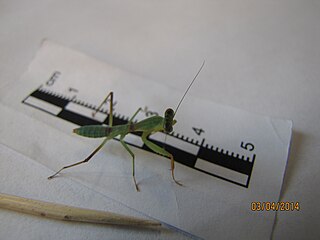 W
WRhombodera valida is a species of praying mantises in the family Mantidae, found in Indomalaya.
 W
WThe Javan rusa or Sunda sambar is a deer native to the islands of Indonesia and East Timor. Introduced populations exist in a wide variety of locations in the Southern Hemisphere.
 W
WThe pigeye shark or Java shark is an uncommon species of requiem shark, in the family Carcharhinidae, found in the warm coastal waters of the eastern Atlantic and western Indo-Pacific. It prefers shallow, murky environments with soft bottoms, and tends to roam within a fairly localised area. With its bulky grey body, small eyes, and short, blunt snout, the pigeye shark looks almost identical to the better-known bull shark. The two species differ in vertebral count, the relative sizes of the dorsal fins, and other subtle traits. This shark typically reaches lengths of 1.9–2.5 m (6.2–8.2 ft).
 W
WThe Sumatran dhole, also known as the Sumatran wild dog is a subspecies of dhole native to the Indonesian islands of Sumatra.
 W
WThe Javan surili is an endangered species of Old World monkey endemic to the western half of Java, Indonesia, a biodiversity hotspot. Other common names by which it is known by include gray, grizzled or Sunda Island surili; grizzled or stripe-crested langur; Javan grizzled langur; grizzled, Java or Javan leaf monkey; langur gris.